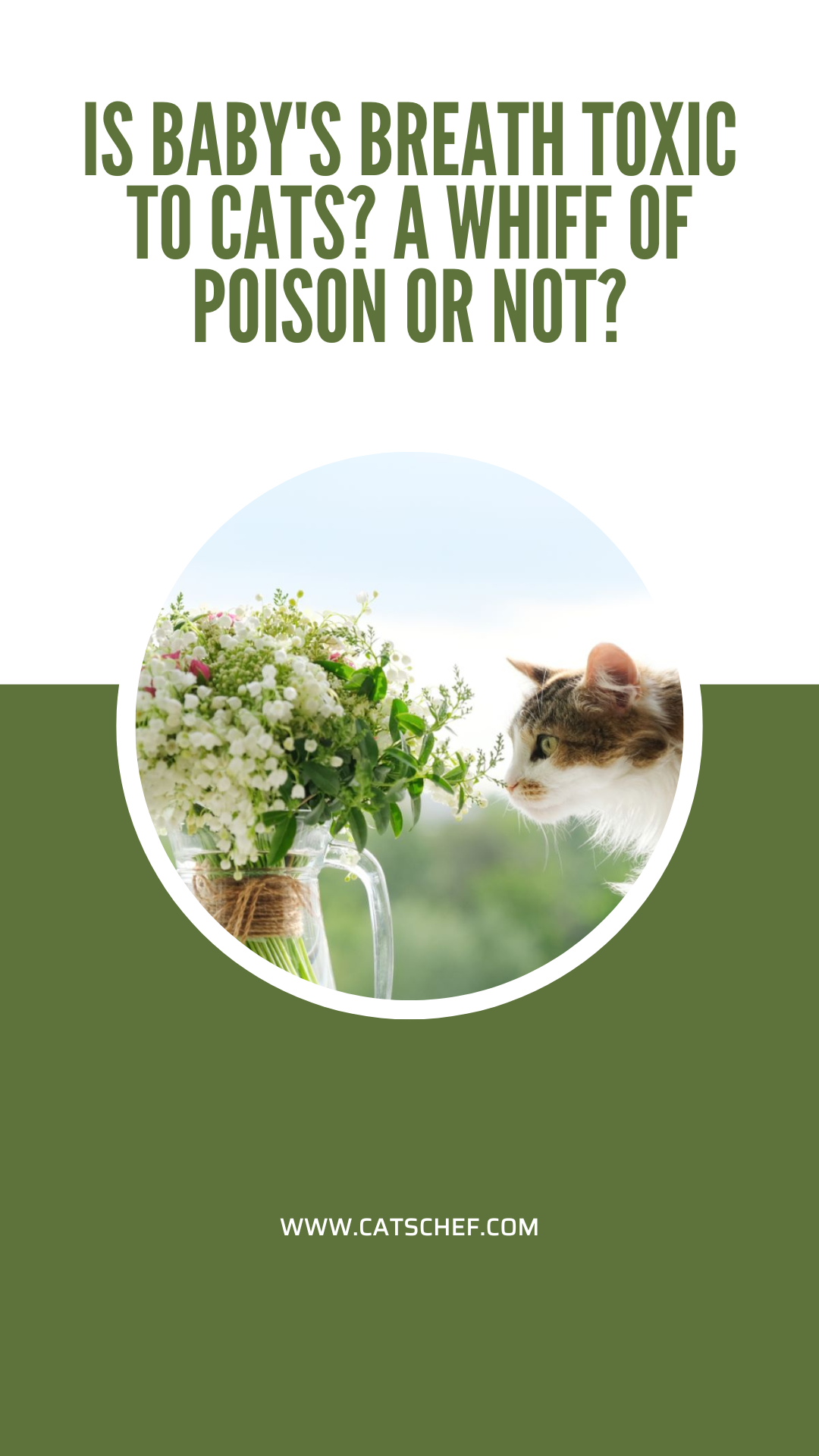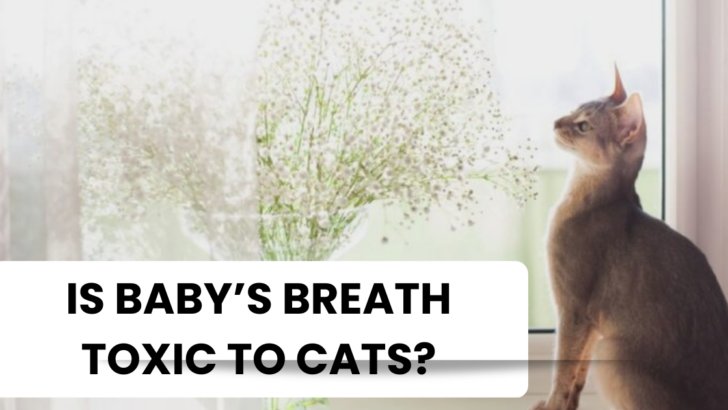You received a beautiful bouquet with baby’s breath, and you placed it in some water. However, you’ve noticed that your cat has been getting a bit too close to it. She might just be sniffing it or trying to play with it. Or she might’ve taken a bite. But, is baby’s breath toxic to cats?
Either way, a pet getting close to a plant is always a cause for concern. Is it poisonous when ingested? Or can the fumes be toxic, too? What should I do if my cat has eaten some of it? First, we need to take a look at baby’s breath itself.
What is baby’s breath?
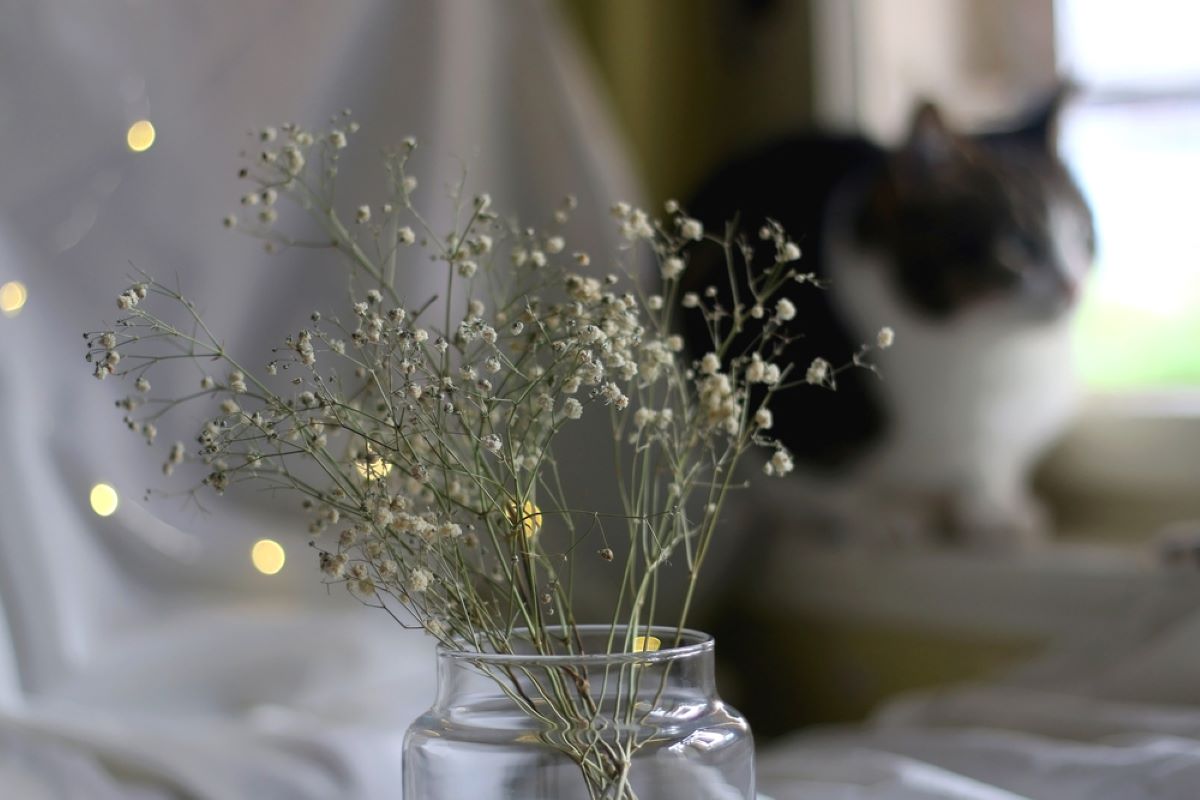
Baby’s breath is a commonly used name for Gypsophila paniculata. It’s an herbaceous perennial that can grow up to 4 feet and is native to central and eastern Europe. It usually grows in sandy, stony, and dry areas like the Steppes. That’s how it got its name. Gypsophila = chalk-loving.
Today it’s used mostly for floral arrangements such as bouquets, corsages, and headbands. So, it’s not uncommon at all to receive a bouquet with these flowers as a gift. It’s also a popular present at baby showers. That’s why people regularl call it baby’s breath.
Is baby’s breath toxic to cats?
Yes, baby’s breath is toxic to cats, but only mildly. It contains saponin which is toxic to an extent, but not enough to significantly harm your feline. It causes irritation in your cat’s throat and digestive system but definitely isn’t lethal.
Whether baby’s breath is toxic to cats or not doesn’t depend much on the amount they eat either. So, regardless of how much they eat, the steps you take will be the same. Assuming you only have one bouquet, it’s very unlikely for them to eat a lot anyway.
You will probably notice the symptoms of the poisoning. But it won’t be anything major to worry about. It might seem dangerous but try not to panic. Let’s take a look at all the possible symptoms, so you know what to expect.
How to tell if your cat ate baby’s breath

While the act of consuming baby’s breath isn’t lethal, the symptoms your cat develops could be. That’s why it’s so important to regularly track your feline’s behavior. This includes her eating and sleeping habits, mood, and energy levels. This can help you tell if she might’ve eaten the plant.
If you notice a change in any of the above, be sure to contact a veterinarian. Don’t ever ignore even the slightest difference in the way she acts. The sooner you act upon it, the easier it will be for her vet to find and start the right treatment.
1. Anorexia
Because of the effect baby’s breath has on the digestive system, it’s very possible for your feline to develop anorexia. If you notice that your cat has been refusing meals, it’s likely a sign of a loss of appetite. If you don’t react immediately, your cat might suffer from starvation very quickly.
2. Vomiting
Vomiting usually comes along with the loss of appetite. If she tries eating something, her digestive tract gets irritated, and it makes her purge whatever she’s consumed. This can be extremely tiring which can make her give up on feeding. It can also lead to dehydration because she’s losing fluids.
3. Diarrhea
This is yet another dangerous symptom that can lead to dehydration. It makes your cat lose fluids so rapidly that it’s hard to keep up. Don’t ignore it if it happens and take her to the vet immediately. Exhaustion and dehydration shouldn’t be taken lightly.
4. Lethargy
Lethargy is sometimes a bit difficult to catch. It might seem as if your cat is simply worn out after playtime. But this type of tiredness tends to be excessive. She might sleep more than usual, avoid certain activities or become completely inactive.
This is usually because of exhaustion and her body trying to fight off the toxins. It’s usually not very dangerous but consulting a vet will help her gain energy faster. And besides, these symptoms could point to something else entirely. Only a professional will know for certain.
What if I’m positively sure she ate it?
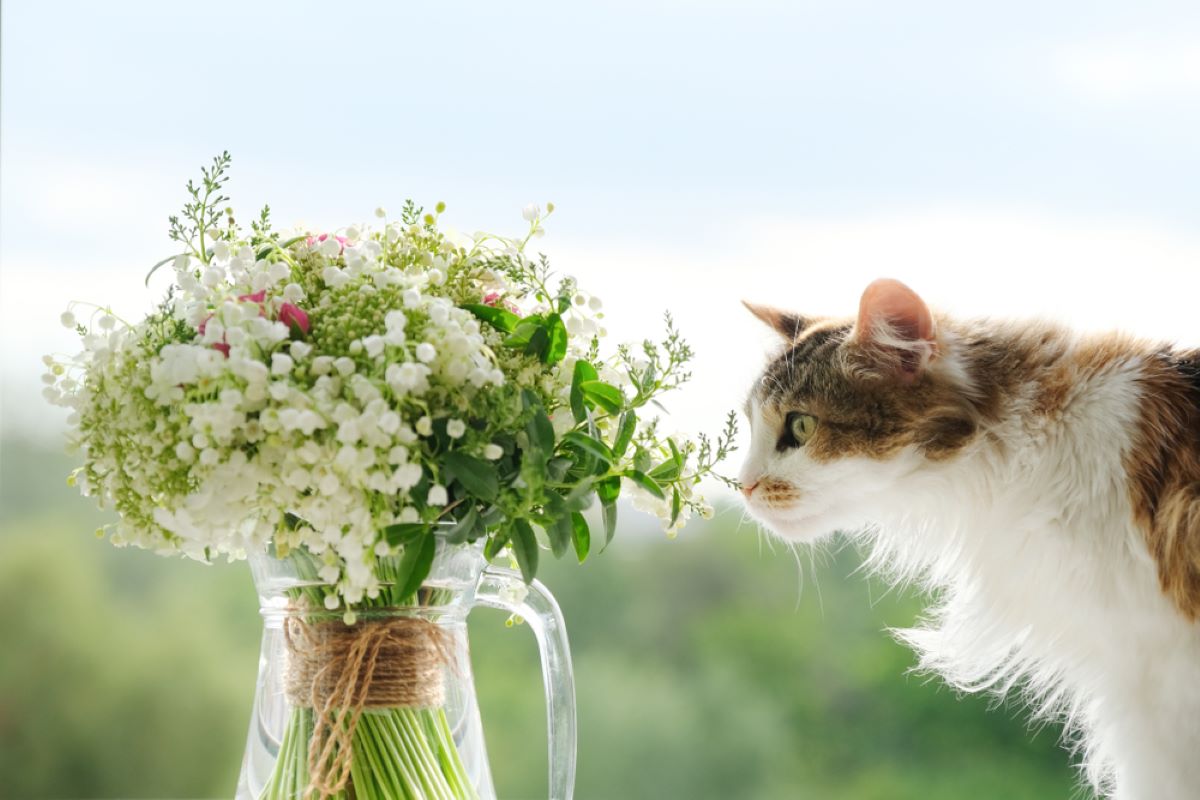
While it all boils down to taking your cat to the veterinarian, there are some steps you can take beforehand. These serve as a way to ease your feline’s discomfort and help your vet get the full picture. So, what should you do?
1. Monitor and document
Once you’ve answered, why is baby’s breath toxic to cats, the next step is to monitor her. You’ll need to pay close attention to her for the next few hours. Try to spot any changes in her behavior and document them.
The best way to do that is to either film her or take pictures. These might be of help to her vet once you take her in. Don’t wait for more than a few hours though. Every second is precious when it comes to your cat’s health.
2. Make it comfortable for her
If you’ve noticed a change in behavior, try to ease her pain as much as possible until the vet visit. The best way to help her is to give her plenty of water. She’ll be losing a lot of energy and fluids, so keeping her hydrated and resting is important.
3. Take her to the vet
This is the most important step that you can’t miss, no matter the reason. The only way to truly help your cat heal and get better is to seek professional aid. You can never be sure of the condition your feline is in, so you need proper advice.
4. Listen to the vet’s instructions
The veterinarian will judge just how severe your cat’s poisoning is. And according to his judgment, he’ll give you a set of instructions. These can contain which medication to get, when to give it to her, what she should eat, etc.
It’s up to you to follow these instructions exactly the way he told you to. By doing your own thing or being inconsistent, you risk your feline’s condition getting worse. It’s in your cat’s and your best interest to do exactly as the vet suggests.
Why are cats drawn to baby’s breath?
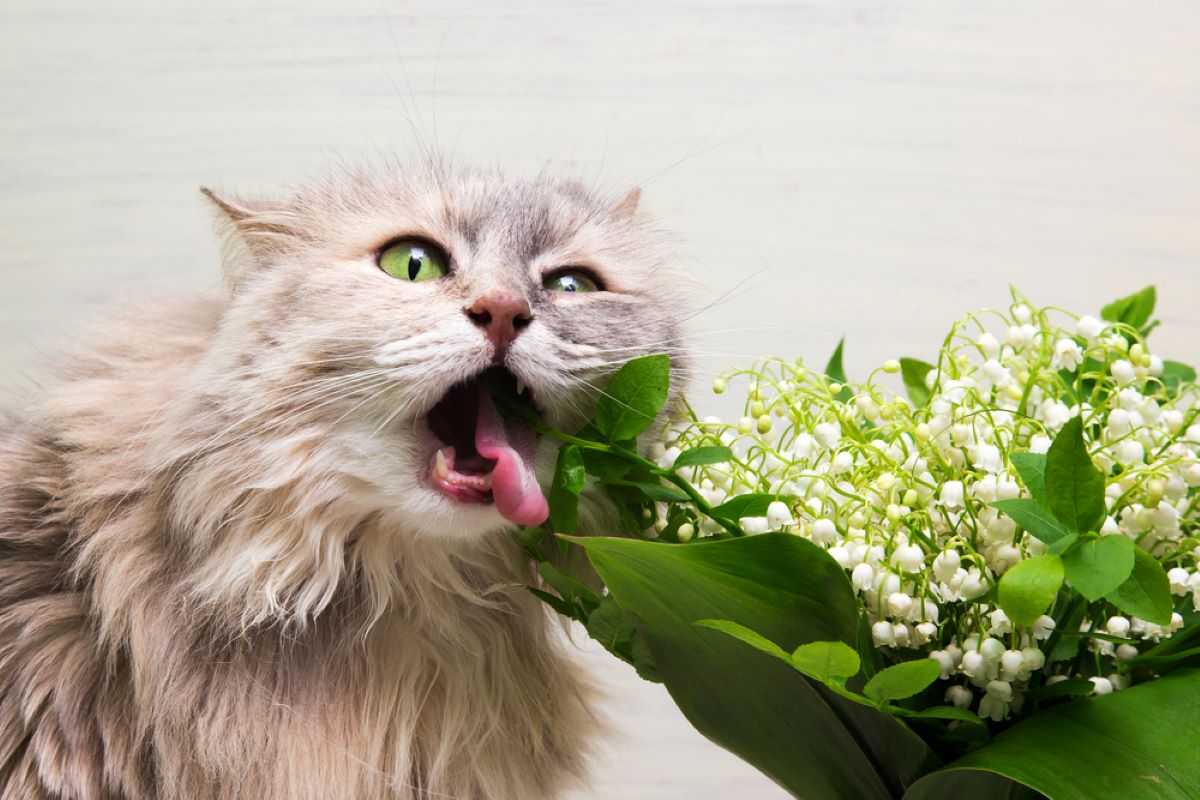
Since baby’s breath seems to be toxic, you might also wonder what makes the plant so appealing? Shouldn’t felines have some sort of instinct that would prevent them from consuming toxic herbs?
You’ll be surprised to learn that cats know as little about some common plants as we do. We probably walk by herbs every day and we have no idea they’re poisonous to animals. And in most cases, your kitty doesn’t really know either.
Chances are that baby’s breath looks like any other plant to them. But why bother eating some herbs and not others? What makes the difference if they can’t tell them apart? Well, the answer might lie in the smell.
Baby’s breath has a very strong fragrance. It’s possible that this scent might attract cats. This hasn’t been proven but it’s the best speculation so far. Luckily the taste doesn’t match the smell, so it’s very unlikely for your cat to take more than a small bite.
How to keep cats away from baby’s breath
There are two possible scenarios in which you’d need to find ways to keep your cat away from baby’s breath. The first is if you’ve received a bouquet as a gift from someone. And the other is if you’re growing baby’s breath.
Regardless of which it is, the actions you can take are the same. It’s important to note that these are just a way to try and prevent your feline from eating the plant. But, cats are very clever and will stop at nothing to get what they want. So, it’d be best not to own baby’s breath at all.
1. Enclosing the plant
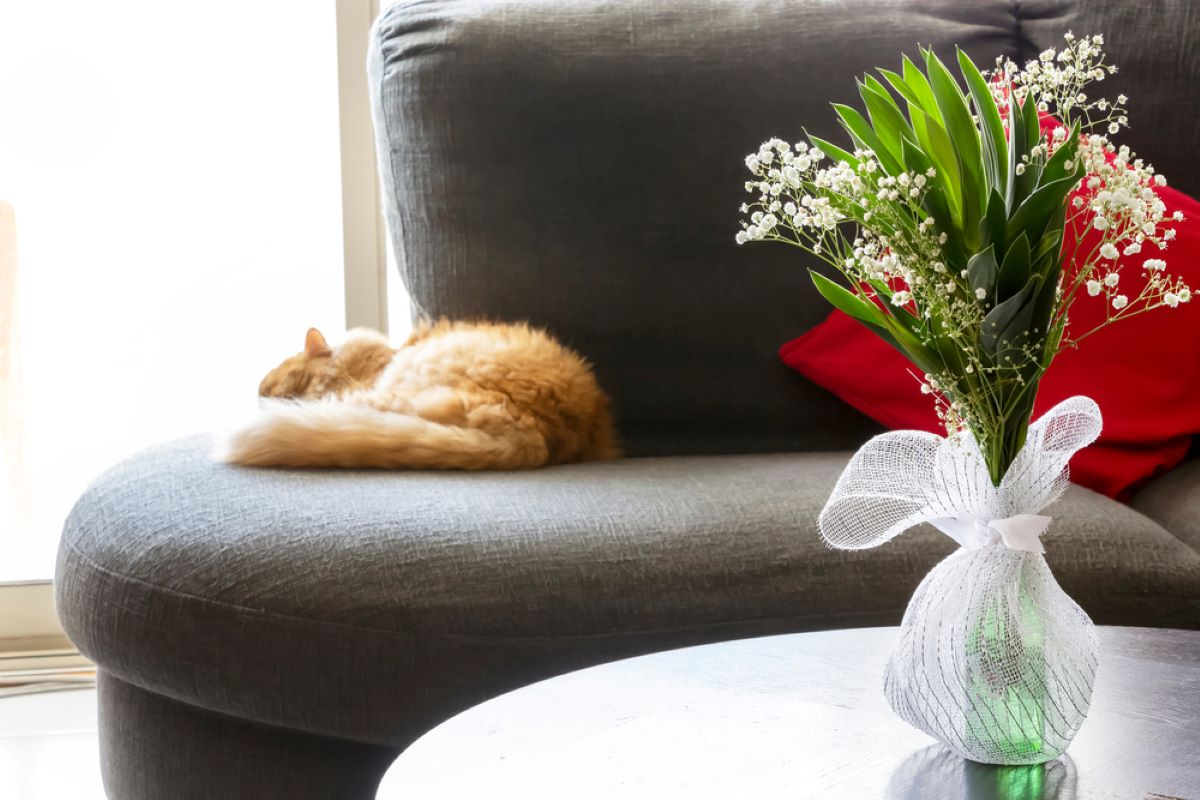
This works best if you’re growing baby’s breath outside, but could work with an indoor plant, too. Try setting up a fence or cage to prevent your cat from getting too close to the herb. If your feline is overly curious or stubborn, this probably won’t be enough.
2. A change of location
Moving the plant to someplace she can’t reach is also a good try at keeping her away. You could move it to a room she normally doesn’t have access to or hang it somewhere high up. There’s always a pawssibility of your cat sneaking in that room or reaching the height, but it’s better than nothing.
3. Never use a spray bottle
Many will suggest the use of a spray bottle, but we stand firmly against it. It might get the job done and keep her away from the plant, but at what cost? Your cat cannot understand that you’re doing it for her safety.
In her eyes, you’ll just be harming her without a reason. This action only leads to mistrust and resentment. So, unless you want to ruin your relationship with your cat, stay away from the bottle. And this refers to any other form of punishment as well.
Is baby’s breath toxic to cats only?
Now that you know that baby’s breath is toxic to cats, does the same apply to other animals, too? For example, dogs or parrots? Would they suffer through the same symptoms? And the answer is yes. The herb is mildly toxic to dogs and can even be fatal for smaller pets.
It’s also mildly toxic to humans. So, if you have children, be careful not to let them near the plant. Despite being different species, the symptoms are usually very similar. The best option for keeping everyone safe and healthy is simply not keeping baby’s breath in your home.
If you’re growing it yourself, consider getting other plants that aren’t harmful to your pets and children. It is a beautiful flower, but it isn’t worth the risk of your family falling ill. And if you only received it as a gift in a bouquet, throw it out. Either that or keep it out of sight and out of reach.
Other plants to avoid

If you’re planning to clean out your garden, you might want to check if you own other toxic plants, too. So far, we’ve gone over why and how is baby’s breath toxic to cats. But what about other herbs? Just which ones should you be careful with?
If you want to make your garden more cat-friendly, you’ll need to remove all potentially dangerous plants. Not just baby’s breath. Then you’ll be able to plant new herbs that aren’t toxic or poisonous to your little furball. Let’s take a look at some of the harmful ones.
1. Daffodils
Daffodils are toxic flowers that can cause a number of issues. For example, abdominal pain, nausea, vomiting, and similar. This is due to a toxic chemical called lycorine. It’s spread throughout the entire plant, but the most concentrated part is the bulb.
2. Tulips
Another flower that’s commonly found in gardens is the tulip. It’s poisonous due to alkaloid and glycoside compounds which can harm your cat when consumed. Every part of the plant is harmful. Since tulips are a part of the lily family, it’s important to mention that all lilies are harmful.
3. Azalea
This is one of the most common houseplants and you might also know it as Rhododendron. It’s moderately toxic, so you need to be extra careful. Azalea contains grayanotoxins which can interfere with skeletal and heart muscle, as well as nerve function.
4. Other plants
There is a large number of potentially dangerous plants and we’ve listed only a few of the most common ones. Some more examples are peonies, oleander, lilies, autumn crocus, cyclamen, daisies, and many, many more. There are also plants that aren’t necessarily toxic but can still be harmful, like roses.
All in all

The question of baby’s breath and its toxicity has been up for debate mainly because of the severity of the symptoms. They usually go away on their own after a few hours and the plant itself is only mildly toxic. So, many dismiss it as nothing more than an inconvenience.
However, despite its toxins not being as severe as they are in some other plants, they shouldn’t be ignored. The symptoms of poisoning they develop in felines might not be deadly, but they’re still harmful. So, by no means should you allow your cat near baby’s breath.
Never ignore a feline that’s consumed some of it and seek out help as soon as possible. Dehydration and exhaustion are serious risks that shouldn’t be cast off because of the plant’s low toxicity levels.
Read more about cats and plants: Are Pussy Willows Toxic To Cats? Better Safe Than Sorry
